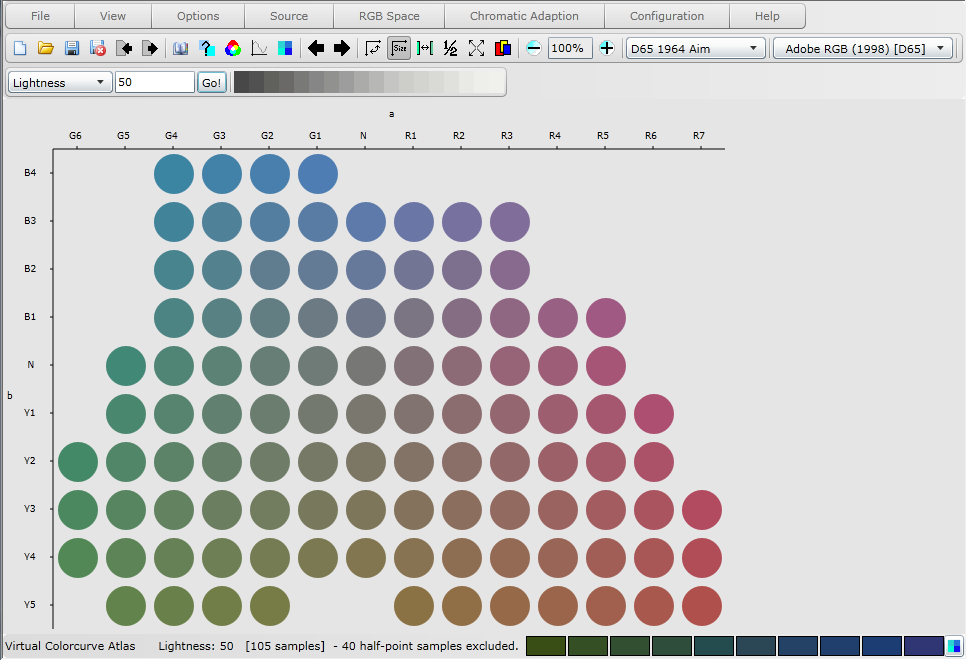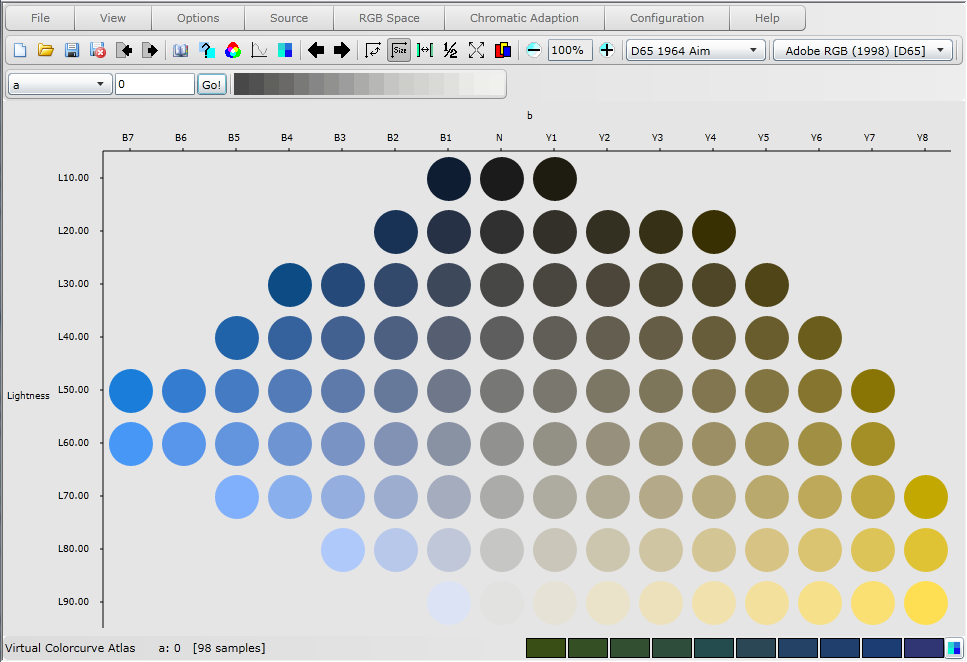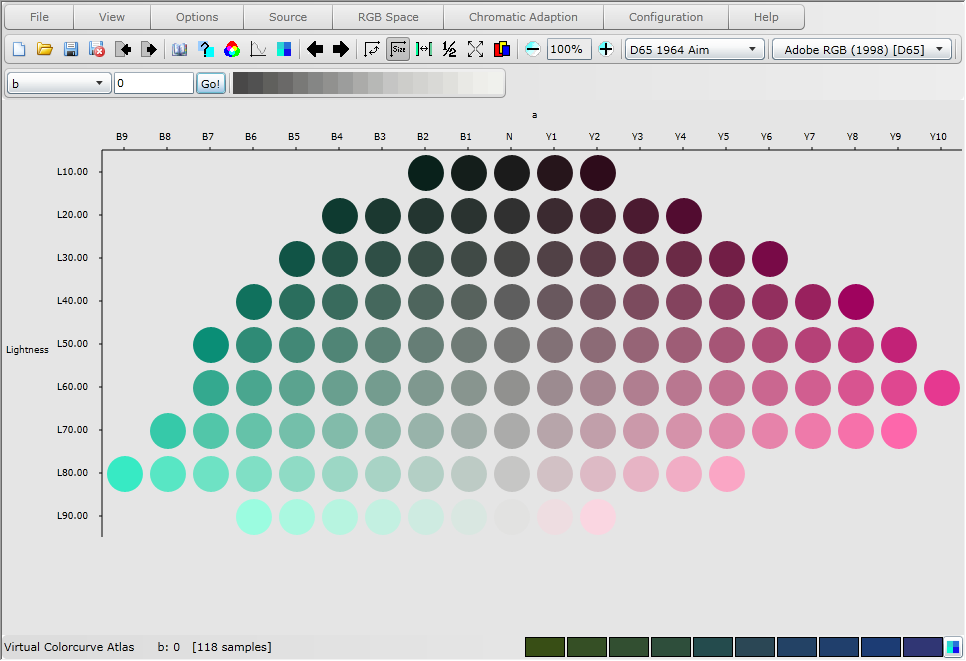|
Colorcurve
|
|
Colorcurve aim colour space is defined by equations based upon CIELab reference points and as such mirrors the rectangular lattice shape of the CIELab system. Lightness is again the central axis of the Colorcurve system with hues radiating from the Lighness axis.
Major hues contain samples which have only one hue in their notation; there are four major hues, R, Y, G and B at 90 degree angles. Colours not on a major hue are represented as a proportion of their two component majhor hues.
|

|
|
Colorcurve colours can also be viewed in planes corresponding to each of the two hue axis Green-Red (A) and blue-yellow (B). The plane of A = 0 (centred on the achromatic Lightness axis) is given below.
|

|
The plane of B = 0 (centred on the achromatic Lightness axis) is given below..
|

|
|
The Colorcurve notation to uniquely identify a colour in Colorcurve colour space is given by lighness or 0, 1, or 2 hue offsets along R,Y,G and B. Nuetral colours are given at Lightness and a neutral designator, e.g. L70 N, chromatic colours on a major hue axis are given as lightness and a single hue designator (e.g. L50 R1), and chromatic colours between two major hues as lightness and two hue designators (e.g. L60 R1 Y2).
|
|
Copyright 2011, Virtual Colour Systems Ltd. All Rights Reserved
|